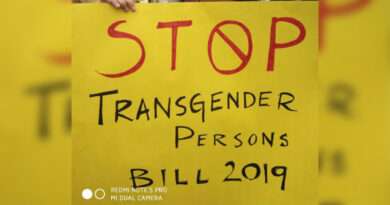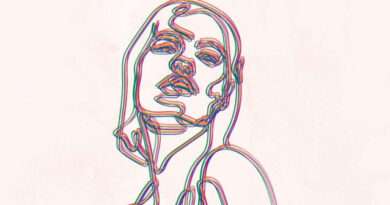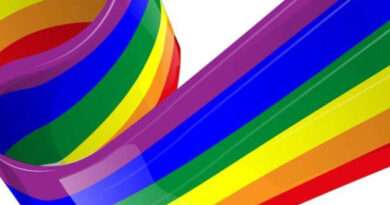Pride has always been Political – Op-ed by Dhruv
“This is not a place for hate speech or discrimination. Social and political issues about LGBTQIA+ are our concern and we want to have this pride in order to fight for our own legal rights” stated a post outlining the objectives of the Pride Parade organised by Color Positive Foundation in Mumbai.
I may be a little late in talking about this, but better late than never, right? So, what are these “social and political rights?”, What exactly is pride? Is it a movement? A celebration? A protest? A gathering? What is it exactly? Some say it means celebrating our identities and freedoms. But I have a question: what exactly do you mean by “freedom”? Is this a new trend of substituting the word freedom with discrimination? If it is, believe me, it does not sound cool. So let’s go back in time and understand what pride truly means.
27 June 1970, A group of individuals marched from Washington Square Park to the water tower at Michigan and Chicago, holding place cards that read “Campaign for Homosexual Equality”, “Gay Liberation”, “Homosexuals are Human”, and “Gay but not ashamed”. I don’t think these are the place cards one would bring to a party (Do tell me if I am wrong). The march was organised exactly one year after the Stonewall uprising. So, what exactly is stonewall uprising or stonewall riots?
During the 1960s and 1970s, there were old “masquerade” or “cross-dressing” regulations requiring a man or woman to wear a particular amount of clothing items that matched the gender on their state-issued ID. The police used these regulations to search drinking places and arrest transgender and gender non-conforming people. On June 28, 1969, shortly after midnight, the police invaded the Stonewall Inn, like they had done many times before. Only this time, something odd happened: Stonewall retaliated. This was followed by a three-day unrest in the area that turned violent. Pride began with a riot, with a protest. How can we say, it is a celebration?
Pride has always been and will be political. Pride is a movement, a protest, and a celebration of our identities, as well as the success of the LGBTQIA+ movement, which resulted in the decriminalization of several discriminatory laws and practices. But there is still a long way to go. Especially in a nation like India, where changing laws and changing people’s perspectives should go hand in hand and that’s what pride does. Pride is a demand for equal rights, equal opportunity, and equal treatment, a message to society that we, too, are human and deserve equal rights and equal treatment. So, how can you depoliticize a protest? A movement?
While most of the Queer organisations like Queer Azadi Mumbai, Humsafar Trust distanced themselves from the pride parade, the organisers of the Mumbai Pride Parade 2023 posted their objectives and guidelines and answered certain queries on their Instagram stories. One question that read- “Pride is not a party, it’s a protest, it is political”, To which they replied “Get political where LGBTQIA+ matters.”. So, should a Dalit gay man put his identity as a Dalit behind when attending a pride parade? Will a lesbian Muslim woman not face islamophobia or misogyny in a pride parade? Do all other forms of oppression, such as Islamophobia, casteism, misogyny, evaporate as soon as pride begins or when you attend a pride march.
We must understand one thing clearly and unambiguously: that someone’s caste and their sexual identity both are interlinked and you cannot sperate them, that intersectionality exists. The LGBTQIA+ community is not a homogeneous group, its members experience various forms of oppression and discrimination based on their intersecting identities, such as race, nationality, caste, ability, and socioeconomic position. Therefore, intersectional politics in Pride entails elevating the perspectives of underrepresented groups within the LGBTQIA+ community, such as transgender and gender nonconforming individuals, people of race, those with disabilities, Dalits and those from low-income backgrounds, without limiting it to any of the aforementioned groups. To understand this, we must acknowledge that casteism, misogyny, racism, islamophobia exist within the queer community as well, that most queer spaces are ruled by upper class, upper caste men, and that you can’t win a movement unless you help its most vulnerable members, without giving them equal space and opportunity to raise their voices. Pride can become a more inclusive and equitable place that responds to the various needs and concerns of its members by emphasizing intersectional politics. Additionally, it can result in more effective activism that acknowledges the complexity and interconnectedness of social justice issues and brings about significant change for all LGBTQIA+ community members.
The LGBTQIA+ community is not immune to politics and because issues relating to LGBTQIA+ rights, discrimination, and equality have been highly politicised in many nations around the globe, it is impossible to separate politics from pride. The lives and wellbeing of LGBTQIA+ people can be significantly impacted by political choices and policies, from healthcare access and formal recognition of relationships to safeguards against discrimination and hate crimes.
“Personal is political”, “Our lives are political”, “Queer lives are Political” and “an apolitical pride parade” is nothing but just a gathering, it’s not pride, it’s not a protest.
References:-
- The Print – https://theprint.in/india/no-political-posters-no-bhakt-bashing-queer-groups-rules-for-mumbai-pride-parade/1323786/
- LOC – https://www.loc.gov/ghe/cascade/index.html?appid=90dcc35abb714a24914c68c9654adb67
- Pictures – Instagram page of Color Positive Foundation
Them- https://www.them.us/story/the-complete-history-of-pride/amp
National Geographic – https://www.nationalgeographic.com/history/article/inside-the-first-pride-parade-a-raucous-protest-for-gay-liberation-lgbtq



